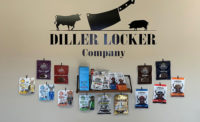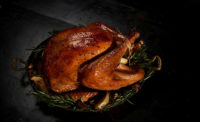For years, buying a steak to prepare at home involved the same step: go to the supermarket, rifle through the wrapped foam trays to find the best cut, and take it to the cashier. Even if you were lucky enough to live by a meat market or a butcher and could get custom cuts, you still were able to see the product before bringing it home.
Today, consumers have become accustomed to an entirely different method of buying steaks: They click a button to add the beef cuts to their online shopping cart, and then they check out. Days or hours later, a box shows up with their steaks and other purchases. Then, for the first time, the customer can open the box and see the steak that they bought.
Consumers have become accustomed to moving many of their purchases online, but meat seemed like a different type of product. A box of cereal or a roll of paper towels is one thing, but each cut of meat is different. How do consumers buy steaks sight unseen, confident in the fact that the product they receive will be free of defects and high quality?
Heartland Foods has made consumer education a vital part of its online sales strategy. The online retailer doesn’t just sell its selections of protein, vegetables and other products to random strangers online. There’s a relationship and trust that needs to be established so that the consumer understands what separates Heartland Foods from just another online retailer.
“We basically sit with each individual family and look at what would be a perfect, customized plan for them. They don’t have to get a mixed box or set package. They can customize just the cuts that they want, the way they want them cut, so that way they’re getting the things that they want and none of the things that they don’t,” explains Justin Freishtat, VP of sales for Heartland Foods.
Those conversations had traditionally been face-to-face, but Heartland has had to make them virtual in light of the pandemic. The company’s customer base is in the mid-Atlantic states, and the goal has been to bring high-quality steaks, chops, chicken and other foods to people, with a transparent farm-to-table supply chain.
Freishtat says that the consumer preference to physically examine each package of steaks or chops speaks more to the inconsistency of the store’s inventory.
“You’re sifting through all those [packages], and you can look at one steak and there’s a vast difference in the marbling, the color, because there’s no consistency in the commercial supply chain,” he says. “We’re dealing with a whole level of quality that isn’t even available in the commercial food chain.”

Heartland lists their suppliers on their website, so customers can develop familiarity with where their meat comes from. Those suppliers use only heritage breeds, like black Angus for cattle and Chester White for pork. Whether the animals are grass-fed/grain-finished or pasture-raised, they are not fed DDGs (dried distiller grains). Freishtat notes that the company has strict protocols for the processing plants as well. Those plants are sanitized with steam cleaning rather than harsh chemicals, as it does no good to produce organic meat only to have it interact with chemicals at the processing or packaging stages.
The net result of those guidelines is that consumers have such confidence in Heartland Foods that they are willing to spend money on meat that they have never seen. The company’s approach is working well. Even before COVID, it had a bevy of regular customers. Once the pandemic restricted retail shopping, the company’s business skyrocketed and remains strong.
“The goal long-term is to serve the whole Eastern Seaboard and start bringing high-quality farm-specific products to people, right to their homes, where you do not have that option currently,” Freishtat says. IP







